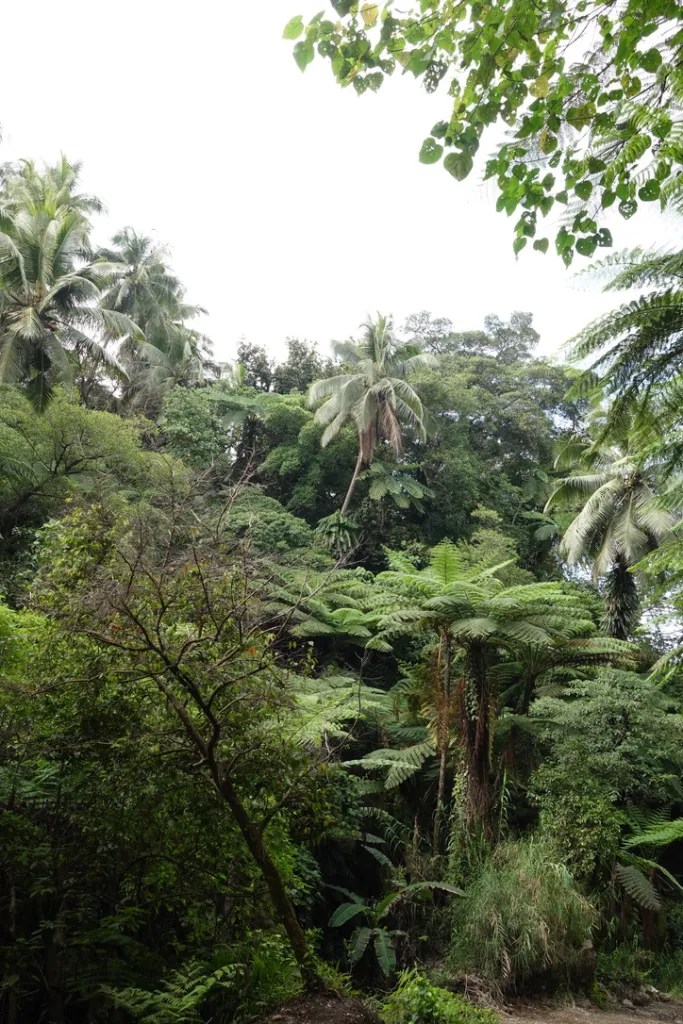Sometimes it needs a stay in a chain motel in the middle of West Virginia, listening to the Spotify playlist created on Vanuatu while showering, to eventually get the inspiring spark to start writing about this unique trip to the island nation of Vanuatu in the South Pacific.
Vanuatu consists of roundabout 80 islands and is located three hours by plane north of New Zealand, west of Fiji, slightly north of New Caledonia, and east of the northern tip of Australia. Still, somewhere almost forlorn in the blue vastness of the Pacific Ocean. Ten days as an end-of-teaching-for-the-year trip with two colleagues from uni: visiting an active volcano and some snorkeling was on the list.



It’s not my first time in the South Pacific; I have already visited the Cook Islands, Tonga, and Fiji. But the more time I spend in this area of the world, the less idealized I perceive it. All these picture-perfect images of white sandy beaches, palm trees, and turquoise waters are authentic, but it’s only a fraction of what these islands are all about. The word „lush“ was probably invented to describe the islands‘ vegetation, genuine people, and a lot of culture and history to learn about. But at the same time, these islands suffer the immediate consequences of climate change (rising sea levels, flooding, more often more severe cyclones), many people leave the islands for work and better education, and their governments also succumb to the temptation of quick money by selling themselves out to Chinese companies.
But first, I was overwhelmed by heavy, hot, and humid tropical air after getting there. The cloudy sky as November is the start of the rainy season. No picture-perfect South Pacific island paradise. An overpriced taxi brought us to a crappy little hostel. You could hear the waves, but a concrete wall tried to tame the force of the ocean. In search of a beach, we ended up as day visitors in a resort—a pool, a small beach, resort restaurant right at the shore. An amazing sunset and a couple of beers in a pitch-black island night concluded the day. A weak Vanuatu dollar made it almost painful to pay several hundred Vat for that.
A couple of days later, and after having celebrated my 41st birthday with more beer and good music (as being born in November, I cannot describe how much I enjoy to spend my special day in a warm and light environment for a change) excitement when boarding the little plane to the island of Tanna. Only 25 people find a place in the several decades-old propeller plane. I sit in the first row, right behind the wall separating the passengers from the pilots, but as the door is missing, I can look them over their shoulders during the flight. Magic moments for all of us when our eyes wander over endless glittering blue. Then, blue becomes turquoise, becomes green, becomes black tarmac … and we land. Tanna is known for Yasur, a volcano that has erupted constantly for over 800 years. Its nightly red glow attracted Captain James Cook back in the day, and he landed with his ship HMS Resolution in nowadays Resolution Bay. Also, on Tanna, custom villages, I refrain from visiting as I feared a human zoo. However, there are barely any tourists around. We stayed in a tree house in the middle of nowhere on the island and got there after a bumpy two-hour ride in the open back of a truck. Everything feels very far, and I feel the magic of travel unfolding again. From the tree house, it was a short 3 km as the crow flies. Red glow at night, smoke, and explosions followed by pressure waves many times during the day.
We cannot wait to climb Yasur! Standing on the crater’s rim, only a line drawn with flip-flops into the ashes should prevent us from falling. We’re a group of 20 tourists, probably the biggest congregation of foreigners on that island at this very moment. We all are in awe, and I suddenly realize how stupid this is to stand on the crater of an active volcano with our smartphones ready to capture any hiccup of Yasur. We’re all meaningless; the volcano doesn’t care about us. One eruption a little more potent than one prior, and we’re gone. However, I cannot withstand the fascination of looking into the depths of the earth, feeling the rumble, hearing the groans, and experiencing the planet’s breath with every minor eruption that flings up glowing lava rocks from deep below. We made our way back, almost drunk from the beauty of nature’s forces. We were sharing impressions long into the night.



We landed back on Efate, the main island, full of volcanic pictures and had enough from sulphuric air. For the next few days, the destination was a bungalow right at the beach on Pele Island. This island is just off the northwestern coast of the main island. It’s off the grid, and solar panel-powered electricity helps to do the necessary. These days are filled with beach and jungle, books and conversations, invitations from locals to dance and sing, and eventually losing track of time and days. Only the poisonous sting of a jellyfish and a nasty stomach bug kept me in reality.



Eventually, back on Efate, we were in full-on island mode. I’ve barely ever been so relaxed, able to enjoy and be present in a long time. Even though the islands of Vanuatu are enchanting, having been able to share the experience with fellow like-minded travelers made the trip more worthwhile and became part of the overall journey.

